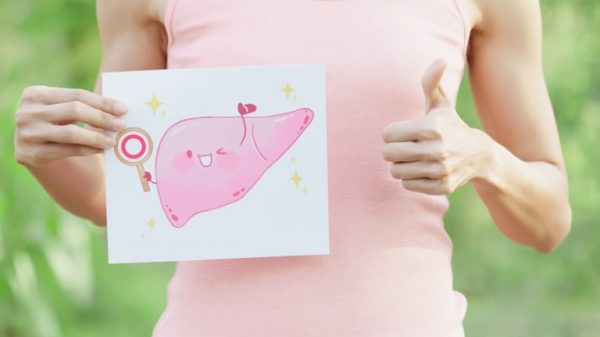Are you planning to receive a liver transplant or donate part of your liver? If so then it’s important to know what to expect. This involves various issues. There are factors like procedures involving what to expect before and during the surgery. This is a major surgery that can cost over $500,000 including the surgical procedure and post-operation medicines. After the surgery, there’s the recovery process you’ll have to go through. It’s important to take steps to deal with various issues like liver transplant scar. There’s no question this transplant surgery can be a life-changer since it provides you with a fully-functional liver. In many ways, the total cost is worth every penny.
However, within the time you’ll want to start dealing with results from the operation including scars. There’s There the main incision that will be the most noticeable and some smaller ones. The good news is they’ll start to fade somewhat over time. There are also steps you can take like “scar massage” to help improve the process. The key is to know how to use such treatments effectively. this will help you to get the best results, which is always critical. There are certain do’s and don’ts to follow when massaging scar tissue.
What Is Liver Transplant Surgery?
This is a surgery that involves replacing a malfunctioning liver with another one. it’s the world’s second most common type of organ transplant after kidney transplants. There are various possible complications including the organ receiver’s body rejecting the new organ. However, for many people, the chance to have a functional liver is worth the challenges and risks.
Various factors determine whether or not you can receive a liver transplant from the get-go. They include the high cost that can be over half a million US dollars. You’ll have to determine if you can cover the costs through health insurance and other factors.
Then a special committee will determine if you’re a valid candidate for a liver transplant. One of the ironic reasons your request might be rejected is your liver’s health isn’t bad enough to warrant replacing the vital organ. In some situations, the committee recommends monitoring your kidney until liver failure makes transplant surgery absolutely necessary.
if the committee approves your request for liver implant surgery, you’ll still go on a waiting list. Your placement on the list will partly be based on your liver’s condition. People with more severe liver failure will be placed higher on the list.
Sometimes it can take a while to find the “right” donor. This involves factors like your liver’s size and other factors. However, after all the logistics are sorted out you can get a green light for your liver transplant.
It’s also important to know what to expect post-operation. This can help you to take the right steps to speed up the recovery process. For example, prescription medicines are given to prevent your body from rejecting the new liver.
It’s also important to follow your doctor’s orders. They include issues related to diet, work/exercise, and rest/sleep. This will help to speed up the recovery process.
How to Deal with Liver Transplant Scars
One of the post-operation issues you’ll have to deal with is scars that result from the liver transplant. There’s one main large incision. There are also smaller ones. The larger scars will take more time to heal. However, you can take steps to speed up the healing process for both large/small scars.
One of the most effective options is scar massage. In fact, both the organ receiver and donors can benefit from this process. Besides massages, in general, you should also make sure to keep moving after the surgery. this includes doing light physical activity like walking and housework. This helps to strengthen your body as it recovers from the major surgery.
Another effective method is massage. in fact, the body starts the healing process right after the surgeon closes up the incision. Scar tissue starts building up during the healing process of the incision. This process can affect how easy it is to move your body/arms.
“Scar massage” is a method that involves rubbing and putting pressure on the scar to help prevent it from becoming raised/hard. It also helps to prevent the scar from sticking to the tissue underneath like muscles/bones.
Another benefit of scar massage is to make the region less sensitive if the scar is very tender/painful after touching it. You can start the process after the wound becomes totally healed. That’s when there are no scabs, strips, or staples.
In other to do the scar massage use the thumb/finger pads on the scar. Start rubbing it using a circular motion. Make sure to add enough pressure so the scar/skin gets moved instead of just rubbing the scar’s top.
You’re adding enough pressure if the skin turns white (blanches) underneath the finger. The fingers also shouldn’t be sliding across the scar but instead moving as your fingers move. Keep this motion up/down the surgery’s scar. Then move beside the scar in all directions including up/down/left/right.
DIY Treatments for Liver Disease
1. Limit alcohol
If you have liver conditions you should reduce your alcohol intake. You could quit completely or limit it to one glass of wine/day, for example. The key is to drink moderately instead of heavily to help protect your liver.
2. Wash your hands
Skin doctors often recommend doing this at least 10x per day. It’s an easy and effective way to help prevent health issues including liver-related ones.
3. Maintain a healthy diet
Make sure you’re eating a healthy/well-balanced diet. This should include various healthy foods like:
- Lean meats
- Vegetables
- Fruits
- Whole grains
- Nuts/Seeds
- Dairy
Make sure you’re also drinking at least 2 liters of water per day. That’s basically the “8 glass of water” we often hear. If you want the best anti-aging benefits then boost it to 3 liters.
4. Avoid toxins
This includes various sources like:
- Additives
- Aerosols
- Chemicals
- Clean products
- Insecticides
Sometimes these chemicals don’t seem to be causing major health issues. However, over time the chemicals they contain can trigger various health issues including liver-related ones.
5. Exercise regularly
Make sure to hit the gym, climb a mountain, or ride a bike to help boost your health. This can provide several health benefits linked to liver health. They include reducing liver fat and lowering blood fat. Try to do moderate/high-level workouts on most days of the week. If you’re really busy try to do some basics like walking and stair-climbing.
6. Avoid becoming overweight/obese
This is a key method to help manage the liver disease better. It can help to lower your risk of fatty liver, which is the first stage of liver disease. One of the best ways to reduce liver fat is to lose weight. You can do this in various ways by reducing calories and/or regular exercise. However, if you want the best results then do both to help prevent needing liver transplant scar.























